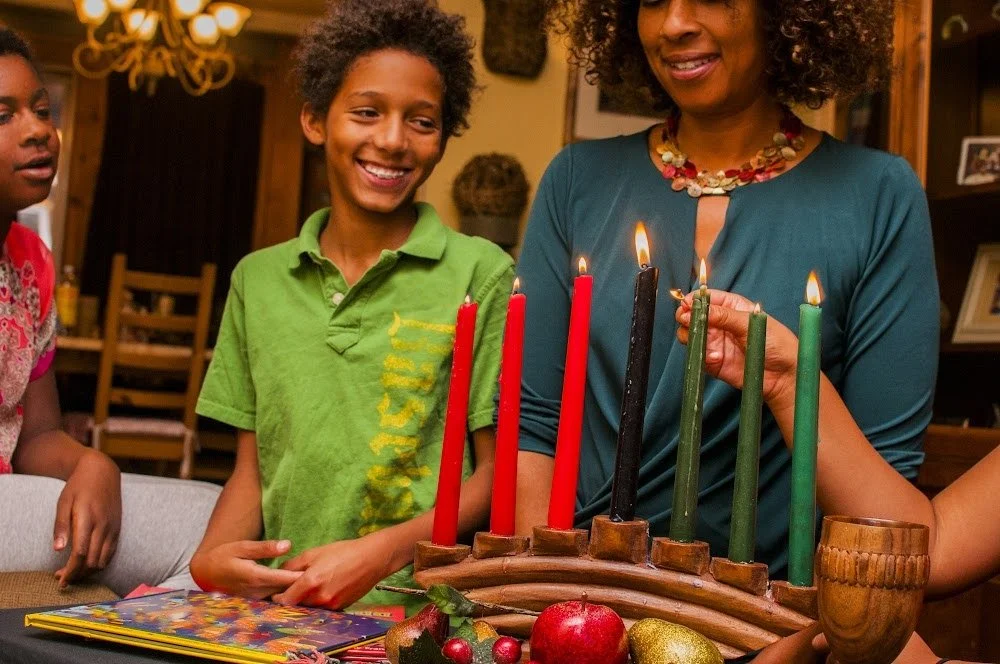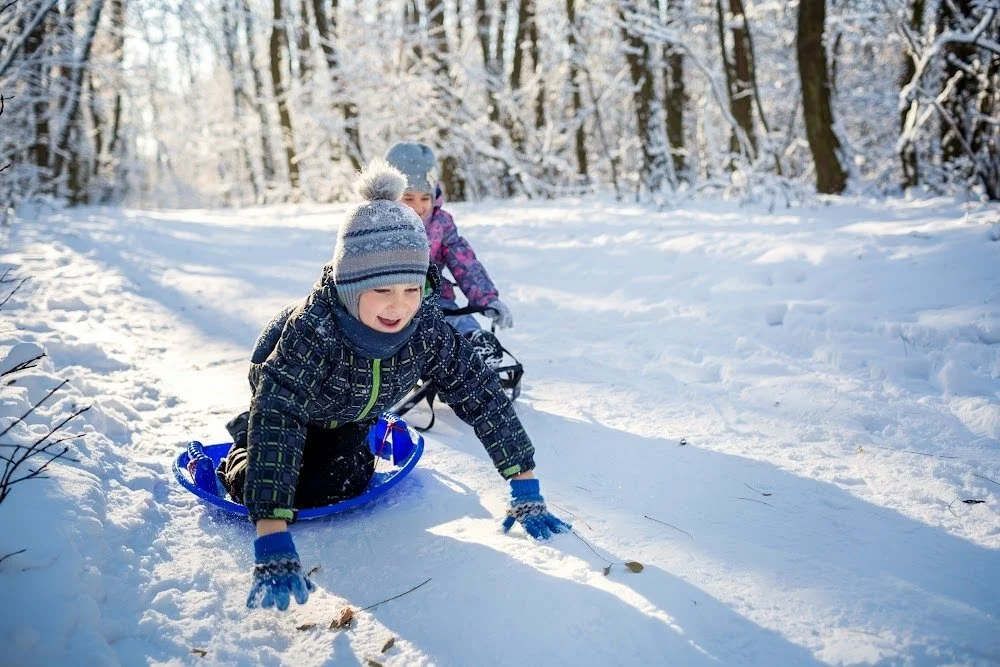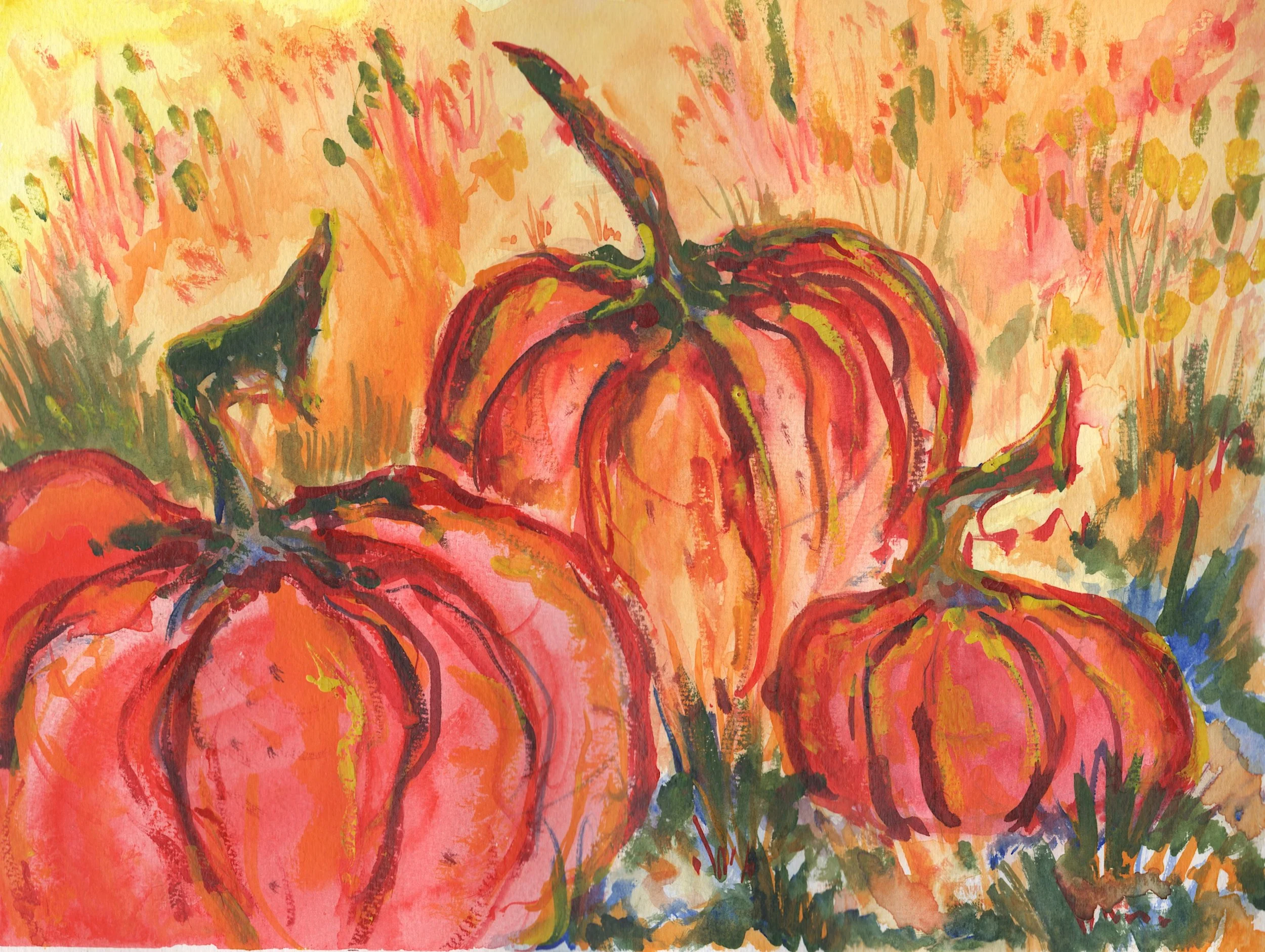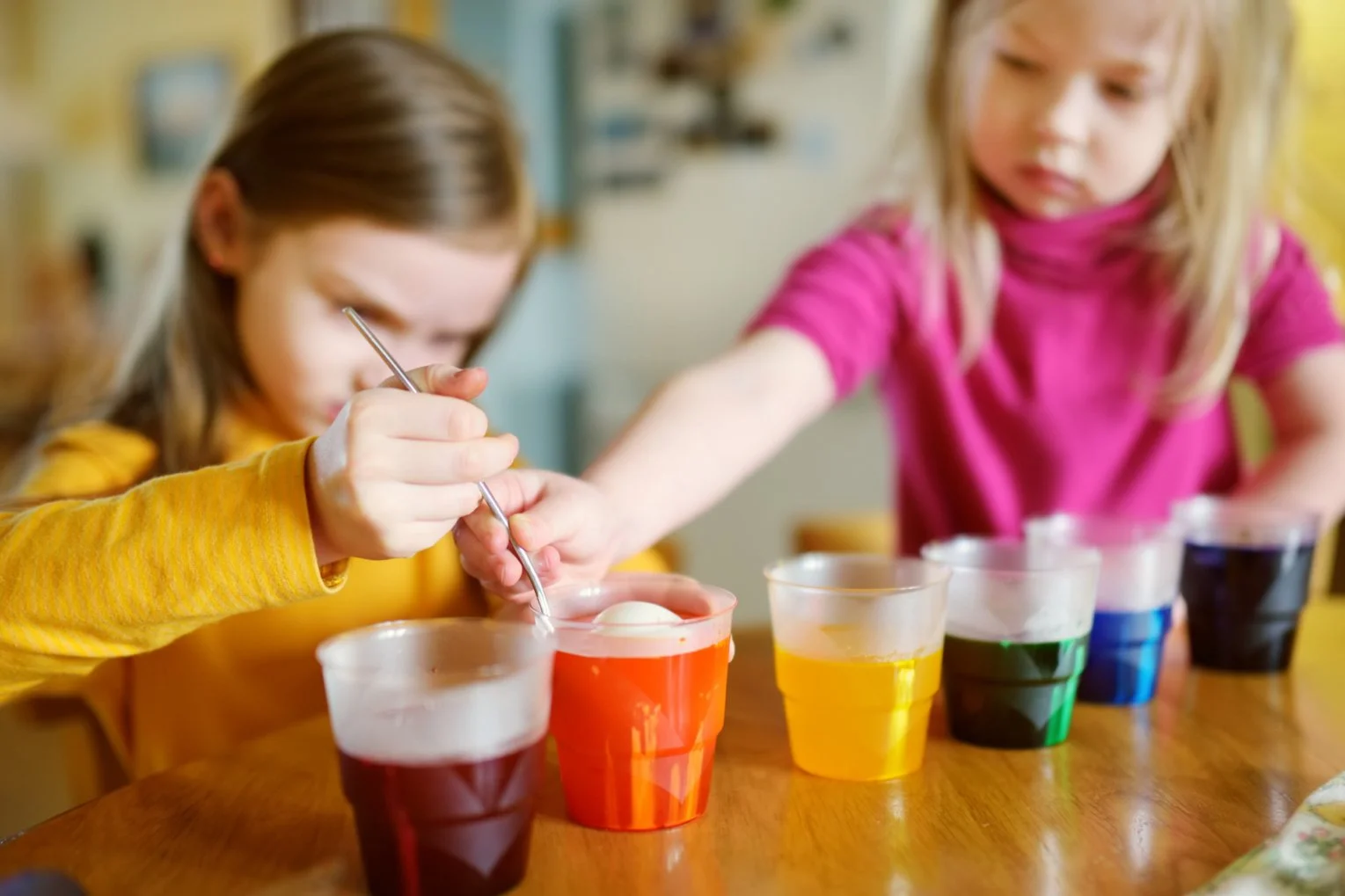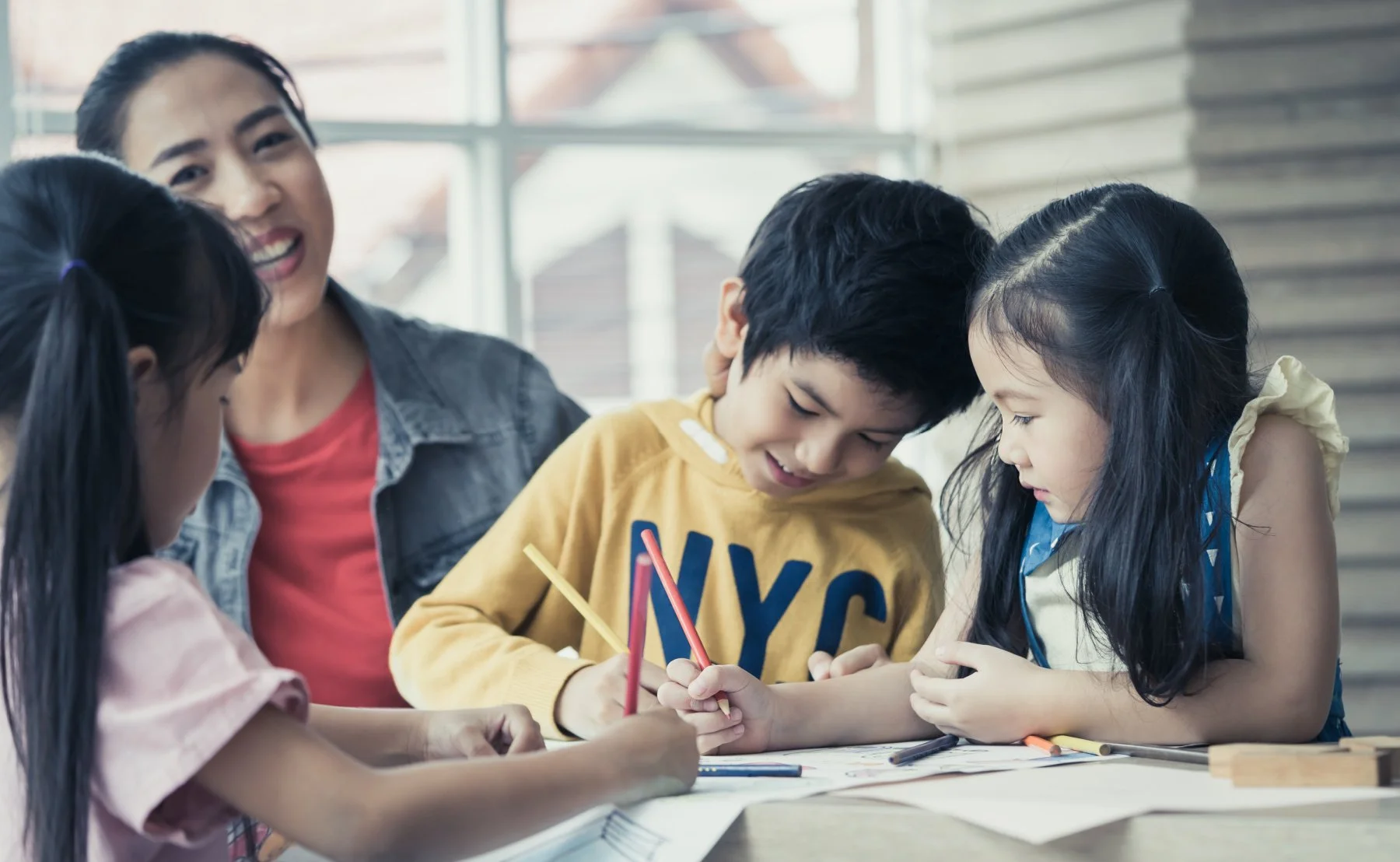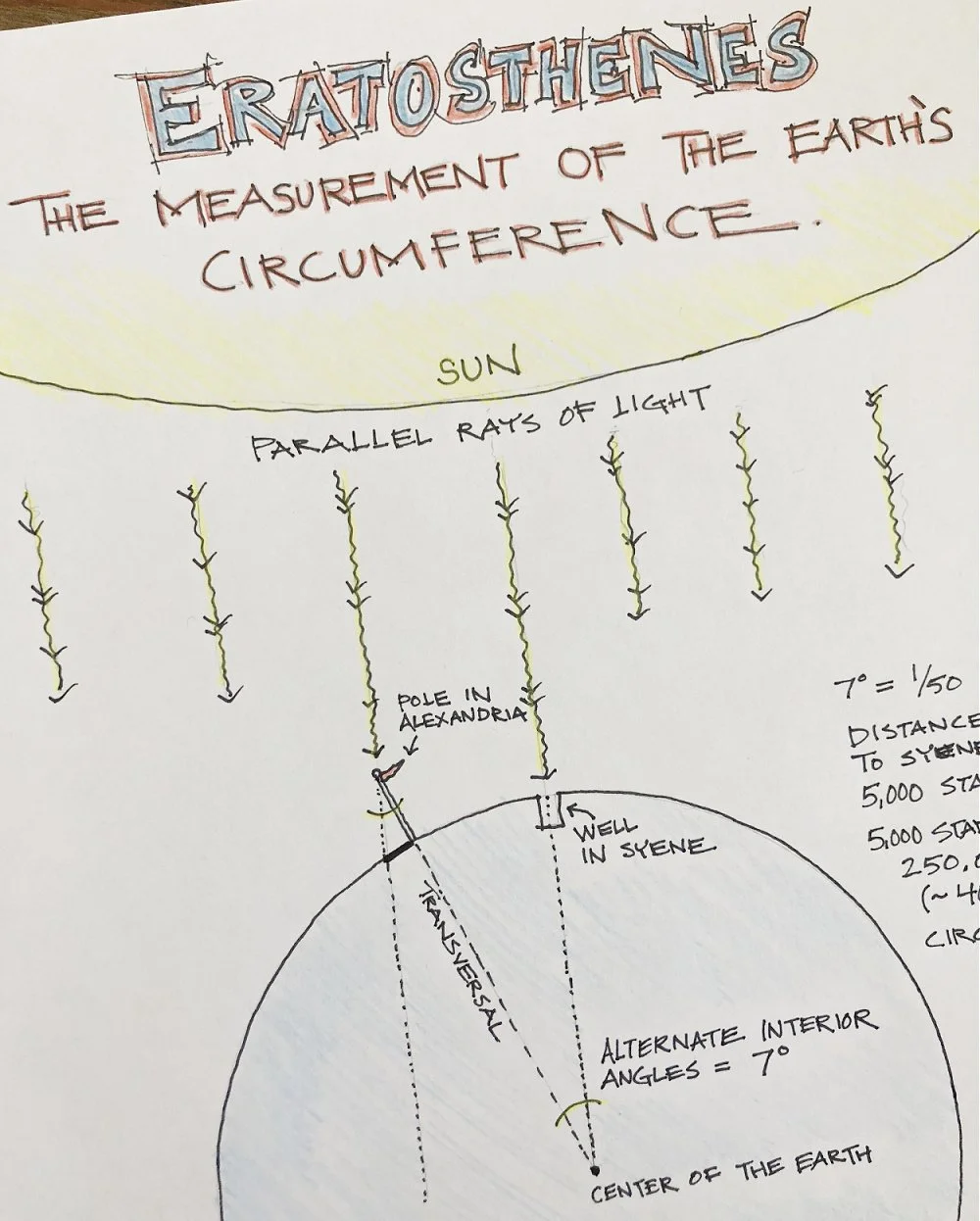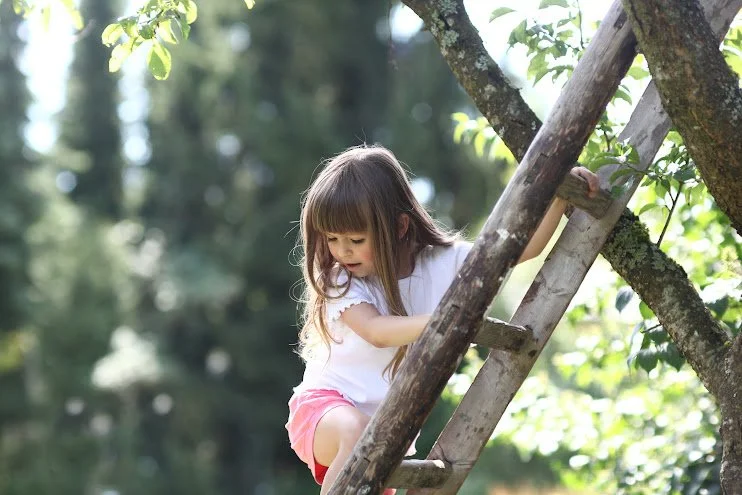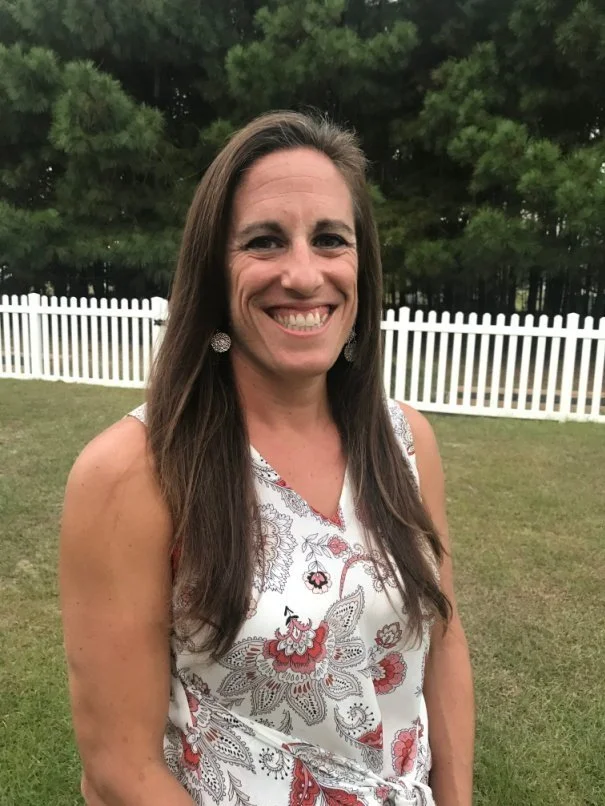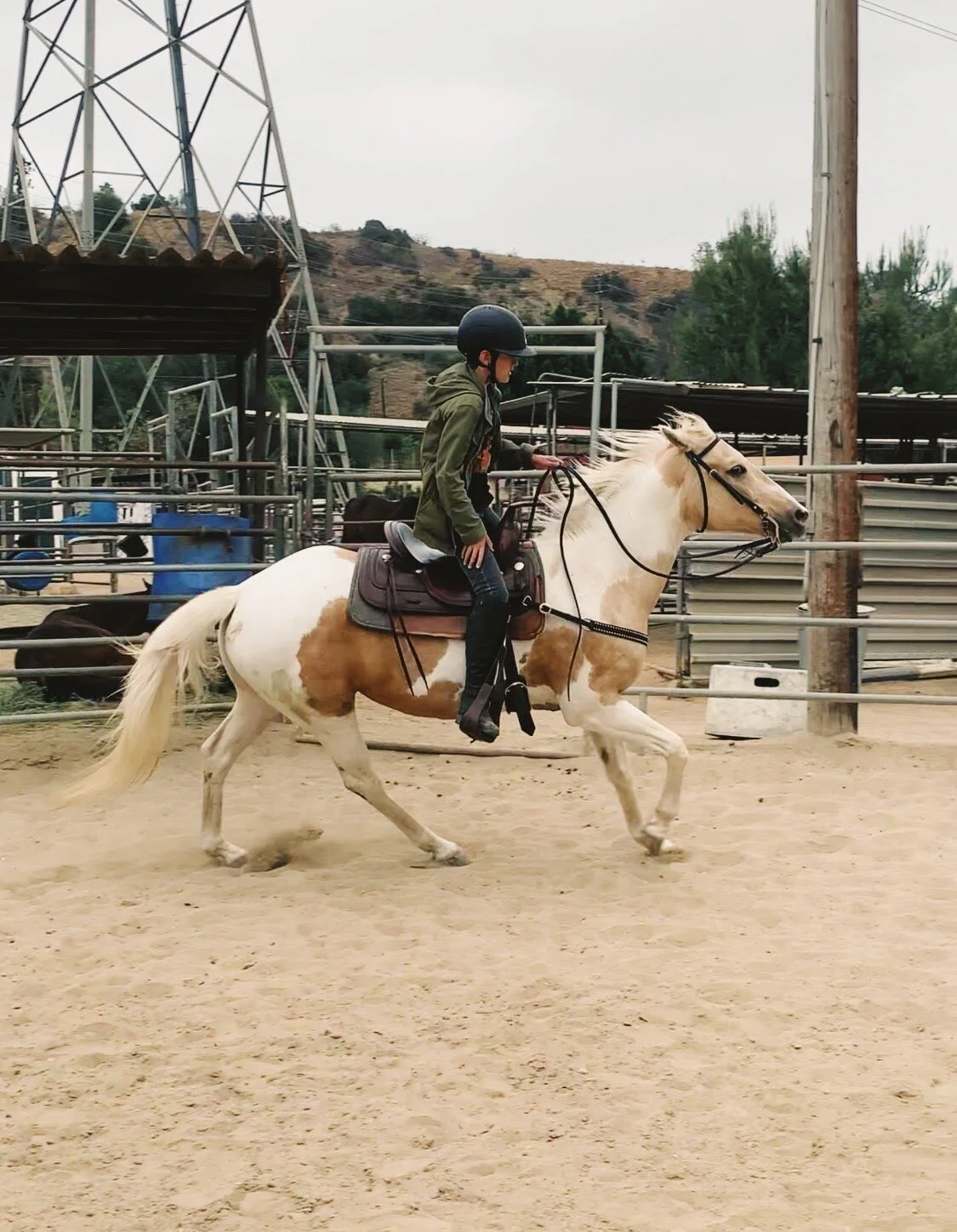
Waldorfish Blog
Simplifying the Holidays: A Path to Joy and Connection
Choose simplicity this season.
The holiday season is a time of celebration for many around the world, but it’s also easy for it to become a time of overwhelm.
During the months of November and December, we often find ourselves caught in a whirlwind of to-do lists, shopping, decorating, and preparing for gatherings. Whether you're celebrating Hanukkah, Kwanzaa, Christmas, Yule, or another holiday, the push to create the perfect festive experience can overshadow the deeper meaning of the season.
Here at Waldorfish, we believe that simplicity and intention are key to creating a joyful, connected holiday season. No matter which traditions you hold dear, the true magic of the holidays lies in connection, presence, and shared moments with loved ones. Here’s how we can return to the heart of the season, creating a time of peace, joy, and togetherness.
1. Reframe Gift-Giving
Gift-giving is central to many holiday traditions, from the exchanging of gifts on Christmas morning to the lighting of the Hanukkah candles alongside small, meaningful presents. But these gifts don’t have to be extravagant or numerous.
Shifting the focus from quantity to quality can bring deeper meaning to the season. Consider giving experiences vs. things.
Consider creating or exchanging handmade gifts, or sharing experiences as gifts. For example, during Kwanzaa, you might explore ways to make thoughtful, creative gifts that honor the principle of Ujamaa (cooperative economics), focusing on supporting artisans or small businesses. Whatever holiday you celebrate, the goal is the same: to give from the heart, and to embrace the joy of giving without the pressure of excess.
2. Pare Down Traditions
Many families feel the weight of multiple holiday traditions—some inherited, some newly created. If you celebrate more than one holiday, like both Yule and Christmas, the calendar can quickly become overwhelming with activities and events.
Take a step back and consider which traditions hold the most meaning for you and your family. Perhaps you keep the Solstice simple, with a family bonfire to mark the return of the light, and save other festive activities for another day. If you're celebrating Hanukkah, maybe you choose just one night to gather with extended family, making the rest of the evenings more intimate and focused on your household.
The holidays don’t have to be packed with events to be meaningful. Choose the moments that truly bring you joy, and let the others fall away.
3. Create Space for Creativity
Where can you create space for creativity this season?
Creative expression is a wonderful way to bring simplicity and connection into the holidays. No matter which holiday you’re celebrating, making time for crafts, homemade decorations, or baking can create special moments of togetherness.
You might create handmade decorations for your Christmas tree, or craft Kwanzaa kinara candles together. During Hanukkah, you could engage in simple art projects like painting dreidels or making homemade gelt (chocolate coins). For families celebrating the winter solstice, creating nature-based crafts such as wreaths or sun catchers can help bring the outdoors in and honor the season. The focus is on creativity, not perfection. These moments of making allow us to slow down and enjoy each other's company.
4. Embrace Nature
No matter which winter holiday your family celebrates, nature provides a soothing counterbalance to the busyness of the season. Taking time to connect with the natural world can ground us and help us rediscover the beauty in simplicity.
A winter walk, gathering pinecones or greenery, or simply sitting by a window to observe the changing light of the season can bring a sense of peace and calm. If you celebrate Yule, you may already incorporate elements of nature, like evergreens and candles, to honor the winter solstice. Even if nature is not a traditional part of your holiday, spending time outdoors can offer a quiet moment of reflection and renewal in the midst of the festivities
Being present is a true gift not just for yourself, but for your family!
5. Focus on Presence, Not Perfection
Whether you're lighting candles for Hanukkah, gathering for a Christmas feast, or celebrating Kwanzaa with stories and song, the pressure to create a “perfect” holiday can be immense.
But what if we let go of perfection and instead focused on being present?
When we stop striving for the flawless holiday meal or the perfectly decorated home, we create space for the true spirit of the season to emerge—connection, love, and presence. Let the kids hang their handmade ornaments, even if they don’t match the theme. Simplify the meal if it allows for more time together around the table. The holidays become more meaningful when we focus on the people we’re with rather than the pursuit of perfection.
6. Honor Rest
The holiday season often brings a sense of busy-ness, but it’s also a natural time for rest. In the colder months, nature itself slows down, inviting us to do the same.
In many traditions, the holidays are a time of reflection and renewal. The winter solstice, for example, marks the longest night of the year, a time for quiet contemplation and honoring the darkness before the return of the light. In the spirit of this, you can give yourself permission to rest during the holidays, whether it’s an afternoon nap, a quiet evening with a book, or simply a day spent at home with no plans. Rest is essential for recharging and fully enjoying the moments of celebration.
Simple and meaningful celebrations bring true JOY! to your family gatherings.
By simplifying the holidays, we create space for what truly matters—presence, connection, and creativity.
Whether you’re celebrating Christmas, Hanukkah, Kwanzaa, Yule, or any other holiday, the heart of the season remains the same: it’s a time to come together, to share joy, and to honor what’s most important in life. This year, let’s embrace simplicity and return to the essence of the holidays—one of love, peace, and togetherness.
Happy holidays from Waldorfish, where creativity and connection come first!
More from Waldorfish:
About the author:
Robyn Beaufoy is Waldorfish’s CEO, and also the course instructor for Simple Season, Waldorf Art for Beginners, and Weekly Art Foundations. You’ll find her intuitive touches and influences throughout everything Waldorfish offers! Robyn has been in the world of education for over 25 years, with an MA in Education and a certification in Waldorf teaching - she also homeschooled both of her children for some of that time. In 2012 Robyn co-founded Waldorfish.com, creating it with the vision of making Waldorf inspired-art and pedagogy more accessible, joyful, and doable for homeschoolers all over the world.
The Importance of Creativity for Caregivers: Nourishing Yourself, Nourishing Your Family
One of the most beautiful things about creativity is that it doesn’t just nourish the individual—it nourishes the whole family. When caregivers model creative self-care, it shows children and loved ones that creativity is valuable and worth making time for. It teaches them that everyone deserves time for their own passions and that creativity can be a source of joy, comfort, and expression.
Caregiving is a beautiful, meaningful role—whether you're a parent, guardian, grandparent, or teacher, tending to the needs of others is a gift of love and presence. But it’s also a role that can easily lead to exhaustion. With so much energy spent on caring for others, it’s easy to lose sight of your own well-being.
At Waldorfish, we believe that creativity isn’t just for children; it’s an essential part of a caregiver’s toolkit, too.
Creativity isn’t only about making something beautiful—it's about nourishing your spirit, maintaining balance, and reconnecting with yourself.
When we, as caregivers, honor our own creative needs, we not only feel more grounded and fulfilled but also have more energy and joy to share with those around us.
Creativity takes many different forms, and will look different for each of us.
Why Creativity Matters for Caregivers
Caregiving is deeply rewarding, but it can also be all-consuming. Between the everyday demands of running a household, supporting loved ones, and ensuring everyone’s well-being, it’s easy to let your own needs fall to the wayside. That’s where creativity comes in—it’s not just a hobby or something to do in your free time (if you had any!). Creativity is a form of self-care.
Creative projects help re-charge your battery!
When you carve out even small moments to engage in creative activities, you’re nourishing yourself on a deeper level. Whether it's painting, gardening, knitting, writing, or simply doodling, creative expression gives you a chance to shift your focus from the external world to your inner world. It’s an opportunity to pause, to breathe, and to reconnect with yourself—something that is essential for maintaining your well-being as a caregiver.
Just like the old saying, “You can’t pour from an empty cup,” you can’t fully show up for your loved ones when you’re running on empty. Creativity fills that cup, offering you a way to recharge and find joy in the everyday. And when you’re filled up with joy and energy, that light naturally spills over into your family life!
Creativity as a Path to Self-Compassion
As caregivers, we often set high expectations for ourselves, striving to be everything for everyone. But creativity invites us to let go of perfection and embrace the process. When you engage in creative activities, it’s not about the end result—it’s about the experience of creating. You’re giving yourself permission to try something new, make mistakes, and simply enjoy the act of making.
This practice of creativity can lead to greater self-compassion, something every caregiver needs. It reminds us that it’s okay not to be perfect, that it’s okay to take time for ourselves. When we approach our creative practices with curiosity and kindness, we extend that same gentleness to ourselves in other areas of life.
The Ripple Effect: Creativity as Connection
One of the most beautiful things about creativity is that it doesn’t just nourish the individual—it nourishes the whole family. When caregivers model creative self-care, it shows children and loved ones that creativity is valuable and worth making time for. It teaches them that everyone deserves time for their own passions and that creativity can be a source of joy, comfort, and expression.
Imagine your children seeing you take time for a simple watercolor painting session, or knitting while you sip tea. They will witness that taking time for yourself is part of a healthy, balanced life—and they may even join in! Family creativity time doesn’t have to be structured or complicated. It can be as simple as drawing alongside each other, making seasonal crafts, or baking something together. These moments of shared creativity become opportunities for connection and joy.
Making Time for Creativity as a Caregiver
Projects that can easily be picked up and put down again are ideal if your time is limited.
We know that as a caregiver, time is often your most limited resource. Between work, household responsibilities, and caregiving itself, finding time for creativity can feel impossible. That’s why it’s important to remember that creative self-care doesn’t need to take hours of your day. Even a few minutes spent journaling, doodling, or crafting can provide a mental and emotional reset.
Start by looking for small pockets of time in your day. Maybe it’s during nap time, or in the quiet moments before bed. Keep your creative supplies easily accessible—a sketchbook on the kitchen counter, knitting needles by your favorite chair, or a few jars of paint on the shelf. These simple reminders can encourage you to make creativity a natural part of your day, rather than something that has to be planned or scheduled.
Ready to Reconnect with Your Creativity?
If you’re feeling the pull to rediscover your creative self, we’ve created something just for you (well, it’s really for us too!) Our Simple Season course is designed specifically for caregivers who want to nurture their own creativity while still caring for their families.
This course offers gentle guidance and easy-to-follow watercolor painting lessons that fit into even the busiest of schedules. You just need to bring a willingness to play, explore, and make space for your own creative expression!
Remember, when you care for yourself, you care for your family. By making time for creativity, you’ll feel more grounded, energized, and ready to pour love back into your caregiving role.
If you’re ready to reconnect with your creative self, we invite you to explore Simple Season and see how creativity can bring more joy into your everyday life.
About the author:
Robyn Beaufoy is Waldorfish’s CEO, and also the course instructor for Simple Season, Waldorf Art for Beginners, and Weekly Art Foundations. You’ll find her intuitive touches and influences throughout everything Waldorfish offers! Robyn has been in the world of education for over 25 years, with an MA in Education and a certification in Waldorf teaching - she also homeschooled both of her children for some of that time. In 2012 Robyn co-founded Waldorfish.com, creating it with the vision of making Waldorf inspired-art and pedagogy more accessible, joyful, and doable for homeschoolers all over the world.
More from Waldorfish:
Merging Occupational Therapy with Waldorf Homeschooling
Enjoy this special piece fromWaldorfish guest writer, Kristin Palen!
She’ll be looking at how to support your child using a Waldorf inspired, holistic learning approach from an occupational therapy perspective.
What is an Occupational Therapist?
An Occupational Therapist (OT) helps people of all ages participate in purposeful and meaningful activities through the therapeutic use of occupations. A child’s occupations are embedded in play!
Waldorf education and OT therapy agree: play is powerful!
Think of the developmental skills that encompass play: sensory processing, self regulation, sensory motor, executive functioning, perceptual motor, gross and fine motor skills. What are these skills essential for: effective learning!
OT is holistic, individualized and child centered - treating their mind, body and soul. OT utilizes evidence-based practices with assessment, clinical reasoning and task analysis to facilitate a child’s successful participation in their occupations by adapting, modifying, and enhancing the environment and task to foster independence.
Blending OT and Homeschooling
I truly love being an OT. The mix of science, human connection and thinking outside the box gets my creativity flowing!
When we first began homeschooling 7 years ago , I structured our day similar to an OT session. I developed a daily rhythm balancing calming with alerting multi sensory activities, attuning to my child’s needs. My child gravitated towards outdoor exploration, thus much of our day was spent outside encouraging open ended play. Our schedule was created with intention being cognizant of over stimulation. (By the way, if you’re wanting some support in your OWN homeschool planning, click here!)
Doesn’t this sound similar to Waldorf?
At the time, I had a basic understanding of Waldorf philosophy. When I dove into the foundations, I discovered rhythm was at the forefront and reaching the whole child through their head, heart and hands. This was what I was already naturally creating!
“OT and Waldorf Education seamlessly blend together in a harmonious manner using a holistic approach to facilitate connection, bonding, and creative exploration. ”
Steiner said it himself, “Where is the book in which the teacher can read about what teaching is? The child themselves are the book.” (Steiner, Rhythms of Learning). The beauty of homeschooling is curating and individualizing a curriculum for your child, which is the essence of OT!
Fast forward 5 years, I have two children ages 10 and 4 who I have been homeschooling using a Waldorf inspired approach, with added OT flare!
Play doesn’t need to be complicated- let your child be the guide!
So you might be wondering how this can help you if you are not an OT?
I will demonstrate how to utilize a holistic approach in your homeschooling rhythm to facilitate successful learning with four guiding principles to follow when devising your lesson plans. This will ensure that you are using a child centered approach to customize any curriculum specifically for your child.
Place connection at the forefront.
Waldorf homeschoolers are masters at holding the space. We attune to our child’s needs, creating flexibility in our rhythm. We adjust our presence to the ebb and flow of our child’s emotions enabling them to feel in control and connected. If we notice our child is resistant or withdrawing from a lesson it is our responsibility to investigate what is underlying the behavior. Then we can make adjustments to facilitate emotional regulation, which in turn will improve their overall engagement and interest.
Use interest led learning strategies.
Naturally weave your child’s interests directly into the lessons. Think about what is motivating, their passions, and what sparks their creativity; create lessons around those interests. Then they can be fully immersed and absorb the lesson. For example, my son is interested in woodworking. Our lessons incorporate this; our main lesson books may not be as filled as others, but he is motivated and participating in experiential learning activities.
Incorporate your child’s strengths.
Set up your child for success by gearing your lessons around your child’s strengths. What is their learning style; are they a kinesthetic, visual, or auditory learner, etc. and how can you utilize these strengths to optimize their engagement? Observe them closely and their sensory preferences. For example, decide if they are more inclined to seek out movement with kinesthetic activities, tactile (touch) input, visual demonstrations, or through auditory input with singing. If your child is more focused and attentive with specific sensory activities, make those a priority in your lessons.
Adapt the lesson and environment to your child’s needs.
Think about how you can adapt the environment and lessons to optimize your child’s learning. How can you structure your daily rhythm and lesson plans to support your child? Your child may benefit from shorter lessons throughout the day; they may be more regulated doing lessons outside; they may be more motivated if lessons involve playing games, adjust accordingly.
The emphasis above is to focus and connect with the child in front of you! Try not to get caught with what they “should” be doing, instead follow Steiner’s advice, meet them where they are, let that guide your lessons.
We want our children to feel connected with themselves, with us and their environment so they can be confident to let their minds soar. This instills the confidence to face challenging and unpredictable life experiences. If a child seems uninterested, reluctant, or bored with an activity, search for direction with the guiding principles above.
Try placing connection with your child at the forefront of your daily routine- you’ll be amazed at what comes!
“The basis of Waldorf Education is to create independent and creative thinkers. We want to be cognizant of the whole child by problem solving how to adapt, modify, customize and facilitate an experience that will empower our children to guide their lifelong learning! ”
Following these guiding principles will lead you in the direction of bringing meaning, purpose and joy to your child; my ultimate goal as an OT!
How to connect with Kristin:
Kristin Palen, OTR/L is homeschool mom and an occupational therapist with over 19 years of experience solely in pediatrics. Kristin is the owner of Coastal Connections Pediatric Therapy, in the Outer Banks North Carolina. Her practice provides direct nature based occupational therapy services, virtual parent coaching and masterclasses coming soon. Kristin’s areas of interest and specialty are sensory integration, emotional regulation, and nature based occupational therapy. Being part of a neurodiverse family Kristin particularly enjoys supporting and coaching fellow neurodiverse homeschool families to adapt, accommodate and meet the needs of their unique children.
Website: www.coastalconnectionsot.com
Tracking The Hour Hand: A Measure of Waldorf Education
It happens every year, and every year it comes as a surprise.
Maybe it’s because it never shows up in quite the same way.
Major growth presents itself.
It’s as if my son truly embodies the grade he is completing.
It makes sense, doesn’t it?
After all, what exactly makes a 1st grader, or a 5th grader or a 10th grader? When do they “become” that? When did you become a parent? During pregnancy, on adoption day, your wedding day, at the moment of your child’s birth? Or was it some other time, when you found yourself able to meet a critical need, like feeding, or providing emotional nurturing when it was called for?
Becoming, or in psychological terms ‘development’, is a mysterious process.
““Each child in every age brings something new into the world from divine regions.””
Little by little, a child is always growing.
A pattern has emerged in our particular family, as I can look back to the end of 4th grade and see that something similar happened. My son starts a school year with an invisible (to him) set of expectations laid out before him like an obstacle course. It is in many ways the job of teachers (including this homeschooling parent) to keep him on track, focused, able to clear fences and maintain a relatively consistent pace. The school year is long, and by February my philosophy about education, especially home education, can be summed up as follows:
¯\_(ツ)_/¯
Yet we continue to meet in the homeschool room week after week, on some afternoons studying world history and exploring ways to use a scientific calculator, on others drawing complex geometric figures and discussing the characters and themes in books we have read. Many nights we build a fire in our backyard, set up a telescope, and look at the moon. Every morning we ride our horses and listen to music. Instruments are practiced (almost) daily.
A new phase is always around the corner.
By the middle of May we spend more time outside. Our school days get a little shorter. We start looking back at the terrain we have traveled, and what remains to be studied.
This is when the magic happens.
“In his book, The Education of the Child, Rudolf Steiner states that an individual’s personal development often takes place on two levels. He notes that there is the change that occurs on the surface, quick change, like the movement of a minute hand on a clock...but more significant changes, changes in habit, temperament, and character, in short, changes in human nature, occur like the movement of the hour hand.” -- Jack Petrash, Understanding Waldorf Education: Teaching From The Inside Out
I ask my son to complete an assignment. What at the beginning of the year took 3 separate class sessions, now takes one sitting. Unable to believe that this is happening, I ask for a little extra. The work is completed. I ask for just a little more, perhaps a simple illustration, or further explanation. It is done without comment.
A sample of student work as they discover the life-cycle and ancestry of bees.
And I say to myself, he has crossed the finish line.
For now.
The hope is that he never sees a finish line, forever finding new ways to challenge himself, and grow.
It is a privilege to be part of the process.
About the Author
Cristina Havel lives in Southern California where she and her husband have worked together for nearly 2 decades. They homeschool their son using the Waldorf pedagogy as a guide and believe in the transformative powers of art and nature.
Looking for something?
Welcome to Waldorfish! We started this adventure in 2012 out of a desire to make Waldorf training more accessible to class teachers in remote locations and to homeschooling families everywhere! Read more, click here.
WE WON! Our Weekly Art courses were voted “best interactive art program.” Learn more about the award, here.
A few of our most popular blog posts:



